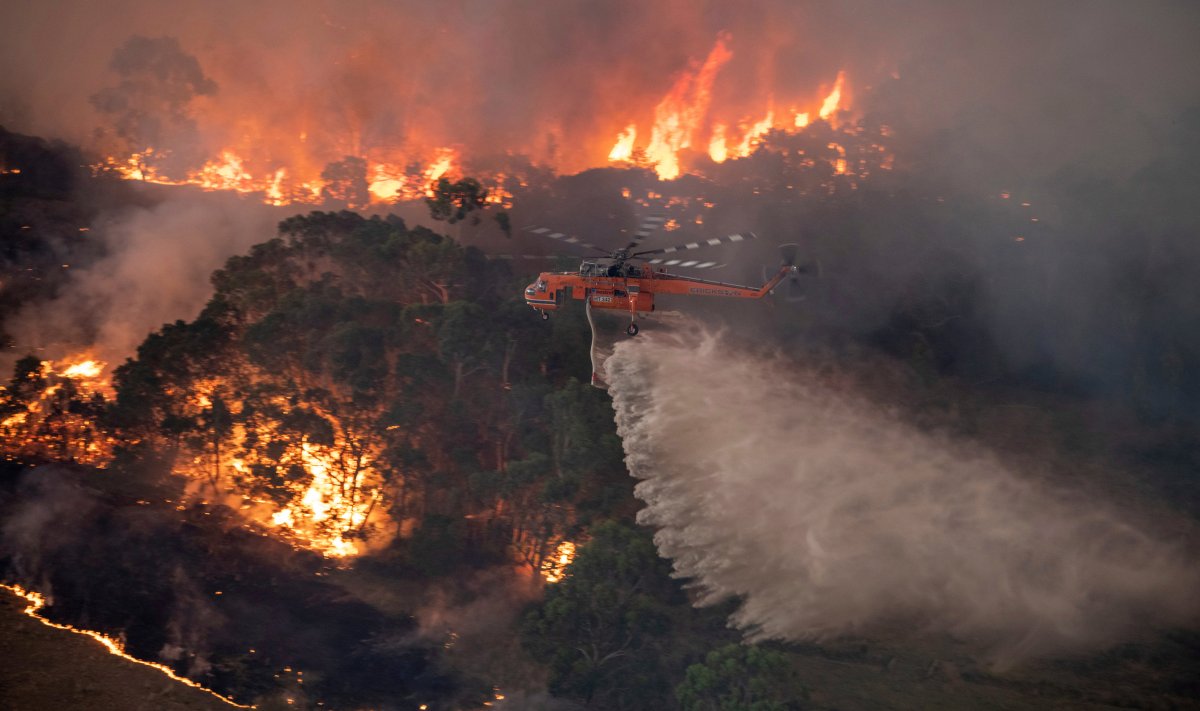Australia is burning, being ravaged by the worst bushfire season the country has seen in decades.

The country’s Prime Minister Scott Morrison told reporters a total of 23 people have died nationwide from the blazes so far.
The deadly wildfires, which have been raging since September, have already burned about 5 million hectares of land and destroyed more than 1,500 homes. State and federal authorities have deployed 3,000 army reservists to contain the blaze, but are struggling, even with firefighting assistance from other countries, including Canada.
LISTEN: Drex speaks with a radio executive & volunteer firefighter in Australia
Fanning the flames are persistent heat and drought, with many pointing to climate change as a key factor for the intensity of this year’s natural disasters.
“We are facing another extremely difficult next 24 hours,” Morrison said at a televised news conference. “In recent times, particularly over the course of the balance of this week, we have seen this disaster escalate to an entirely new level.”
By Saturday evening, 3,600 firefighters were battling blazes across New South Wales state. Power was lost in some areas as fires downed transmissions lines, and residents were warned that the worst may be yet to come.

“We are now in a position where we are saying to people it’s not safe to move, it’s not safe to leave these areas,” state Premier Gladys Berejiklian told reporters. “We are in for a long night and I make no bones about that. We are still yet to hit the worst of it.”
Every Australian summer, the country undergoes a fire season, where it’s easy for bushfires to start and spread. Natural causes are to blame most of the time, like lightning strikes in drought-affected forests. But recent hotter, drier conditions are making the country’s fire season longer and harder to contain.
- ‘Shock and disbelief’ after Manitoba school trustee’s Indigenous comments
- ‘Super lice’ are becoming more resistant to chemical shampoos. What to use instead
- Is home ownership only for the rich now? 80% say yes in new poll
- Invasive strep: ‘Don’t wait’ to seek care, N.S. woman warns on long road to recovery
The country is in the grip of a heatwave, with record-breaking temperatures over the last three months. A heatwave in mid-December broke the record for the hottest day in history — the country’s Bureau of Meteorology said the average temperature nationwide was 40.9 C.

Fuelling the fires, Australia is undergoing its worst drought in decades. The bureau said last spring was its driest on record, adding that temperatures have already risen by more than 1 degree C since 1920, with much of the increase taking place since 1950.
Geoscience Australia, a branch of the nation’s government, said human activity is another factor. In November, the New South Wales Rural Fire Service said they arrested a 19-year-old volunteer member on suspicion of arson, and charged him with seven counts of deliberately setting fires over a six-week period. Geoscience said fires originating from human activity and lightning account for “about half of all ignitions in Australia” each year.
Australia is also one of the world’s biggest per capita greenhouse gas emitters. Morrison has repeatedly come under fire from activists for his government’s climate policies, which experts have said are contributing to one of the worst bushfires seasons the country has seen since 2009, when Australian wildfires killed 173 people in Victoria.

New South Wales, which has been hit the hardest by bushfires, declared a state of emergency on Thursday over wildfire danger.
In November, 22 former emergency chiefs, including the former commissioner of the New South Wales Fire and Rescue Department Greg Mullins, sent letters to Prime Minister Scott Morrison in 2019 warning of the dire impacts of the climate crisis on Australia and requesting a meeting.
In response, Morrison pledged to reduce carbon emissions, adding he would stick to “sensible” policies, and that there wasn’t “a single policy, whether it be climate or otherwise,” that can completely protect against the fires.
Carol Sparks, the mayor of the regional town of Glen Innes, who was herself evacuated from the path of a fire over the weekend, slammed federal politicians for failing to directly link the fires to the climate crisis.
“It’s climate change, there’s no doubt about it. The whole of the country is going to be affected. We need to take a serious look at our future,” Sparks told the Australian Associated Press.










Comments